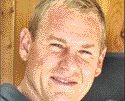With two Bre-X books already in the bookstores, who needs a third? We think Bre-X shareholders do, or we would never have taken on the task of writing a technically oriented account of what went on at the Busang project operated by Bre-X Minerals in the jungles of Kalimantan.
The two books already available do not answer the question that puzzles investors to this day: How did Bre-X’s technical team manage to fool the world for so long? After all, most salting scams are crudely executed, short-lived, and easily detected because of the wildly erratic assay results.
The other books would have us believe that Busang really was as hokey as all the rest.
We are told that chief geologist Michael de Guzman trotted in and out of a local store and bought placer gold from a Dayak villager on a regular basis, which his trusted sidekick Cesar Puspos then threw into opened sample bags on top of a pool table at a warehouse/office in Samarinda.
All this makes for colorful copy, but something doesn’t quite add up. The mining world was not deceived by amateurish antics. Having been fooled once, it is impossible for us to buy the notion that Busang was a one-man salting scam that began and ended in the Dayak equivalent of a 7-Eleven convenience store. Rather, we have the sneaking suspicion that this is what some people involved in the project want the world to believe.
Bre-X: Gold Today, Gone Tomorrow, published by The Northern Miner, shows that the salting swindle was organized more professionally than anyone dreamed possible. It shows that the initial salting attempt by de Guzman and Puspos was so badly executed that an experienced professional was brought on board in late 1993 to help the fumbling incompetents get things right (or wrong, as the case may be).
In early 1994, as a new round of drilling started, the unsavory character with the dubious technical skills was put to work doing “experiments” to improve the reproducability of the wildly erratic assay results. And this work, designed to smooth out the telltale signs of salting, was not done on top of a pool table in Samarinda; it was carried out at a laboratory built on site, which included everything needed to prepare samples for assaying and to perform the actual assays.
Bre-X shareholders unwittingly paid to build and operate the lab, which then housed a number of individuals whose sole task was to deceive them and the mining world by finding ways to generate remarkably consistent results that reflected the underlying geology. In a nutshell, it was this scientific approach to salting that enabled Busang to become the gold swindle that fooled the world. Busang was not an exploration project; it was an “ounce factory” that operated so smoothly and professionally that everyone believed the goods rolling off the assembly lines were the real thing.
Unlike previous salting swindles, which were haphazard and hokey at best, Busang was truly “without precedent” in terms of the precision with which it was perpetrated. It was not, as the other books would have us believe, entirely the doing of one dead guy. We are told that the much-married mastermind picked up a few million dollars for his efforts, only to turn around and jump from a helicopter because
he could not live with the heartbreak of hepatitis B. We are told that the owners and managers of Busang had no idea what was going on at their ounce factory, because they were busy operating a boiler room or sitting on a Caribbean beach.
Something is rotten, and it ain’t in Denmark.
Bre-X: Gold Today, Gone Tomorrow does not pull any punches. It is the book John Felderhof and David Walsh do not want the public to read.



Be the first to comment on "EDITORIAL — Book refutes one-man salting theory — The Bre-X scam, Part II"